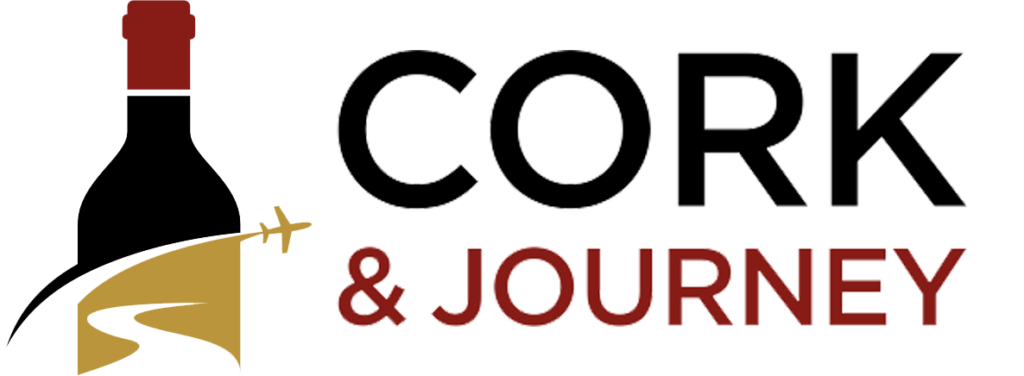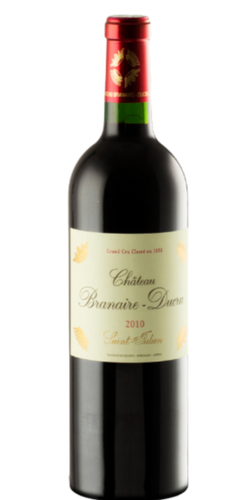
Our Rating

Bordeaux
Red Blend
From a prestige brand – to Bordeaux’s version of a value brand – and back to its former glory, Château Branaire-Ducru has seen quite the evolution since it achieved Fourth Growth status in the 1855 Bordeaux Classification.
The vineyard that is now owned by Château Branaire-Ducru has been farmed for grapes since the late 17th Century. This original parcel of land was later splintered off, and in the early 1800s, what is now known as Château Branaire-Ducru was established.
Located in St-Julien, Branaire-Ducru has changed hands a few times over the years, most recently in 1988 when the Maroteaux family purchased the historic property. Château Branaire-Ducru produced high-quality wines until the early 1980s when demand became driven by how inexpensive the prestige label had become rather than the quality of the wine. The wines of Château Branaire-Ducru had fallen to such insignificance within the Bordeaux community during this period that they were not even rated.
Thankfully, the Maroteaux family, helmed by Patrick Marotaux, saw the potential in Branaire-Ducru and flooded the château with monetary and strategic investments. The result is what some might call a Phoenix from the ashes moment, as the winery once again produces some of the most sought-after wines in the region.
The old guard of French wineries are known for their long history of crafting fine wines, bottles whose names have commanded respect for nearly two hundred years. With so much prestige baked into that history, it’s easy for a brand to rely on tradition – and what has always worked, rather than embracing new techniques.
Despite its reputation and lengthy history, Château Branaire-Ducru continues to innovate. It is one of the few wineries in Bordeaux to use what is known as gravity flow in their winemaking.
Gravity-flow wineries are considered “low intervention” because they set out to harness the power of nature in order to preserve the integrity of the fruit rather than manipulating the grape with the use of machinery and chemicals.
On the surface, the name gravity-flow can be confusing because, hey, isn’t gravity present in every winery? Well, yes. But this method is actually pretty clever.
Wineries like Château Branaire-Ducru build their facilities in such a way that they do not require the use of pumps or motorized machinery to move the juice through the winemaking process. This is usually achieved by constructing the winery on a hillside and using multiple levels within that construct to move grapes from one phase to the next gently.
Devised at the request of Emperor Napoleon III, the 1855 Bordeaux Classification system is the oldest wine classification system in France. The system initially appears to have been devised as a sort of vanity project for Napoleon in order to sort and well, classify wines according to their quality and price.
Why was this necessary in 1855? During the Exposition Universelle of 1855 (an event usually likened to the World’s Fair), Napoleon intended to display France’s superiority in art, industry, and, of course, wine – all to boost France’s standing in the world.
Knowing that the event would draw crowds from across Europe and beyond, Napoleon asked the local Chamber of Commerce in Bordeaux to assist in planning and organizing France’s best chateaux so that visitors would understand the quality of wine before them.
The Chamber agreed to the request in part but ultimately enlisted the help of the country’s esteemed wine brokers, also known as the Syndicat of Courtiers, to design the specifics of a ranking and classification system. The result was a ranking of First to Fifth Growths, with wines exclusively from Medoc – aside from one chateau, Château Haut-Brion, from Graves.
Right Bank wines would not get their own classification system until one hundred years later when the St-Emilion Classification was created.
Like most Left Bank red wines, Cabernet Sauvignon (70%) is the primary blending grape in the 2010 Château Branaire-Ducru, Saint-Julien, Grand Gru Classé. The rest of the blend comprises Merlot (24%), Petit Verdot (4%), and Cabernet Franc (2%).
With a wine like this, from a vintage as good as the 2010 vintage was, you’re getting sophistication in spades. The nose on this Left Bank Bordeaux isn’t subtle. The spice, dark fruit, and minerality really make themselves known. We picked up black currant and black cherry, a heady mix of tobacco and cedar, and a gravelly graphite quality.
The palate is a panoply of flavors and one that is marked by its refined structure. Sour cherry and raisin, spicy cinnamon, cedar, black pepper, and that same graphite, which contribute to the wine’s minerality. This Bordeaux has a generous finish, is thoroughly balanced, and, frankly, stunning.
There is no doubt that Château Branaire-Ducru has reclaimed its place among the top producers in Bordeaux.
France
Bordeaux
Red Blend
14
N/A
90 minutes to 2 Hours
Now-2030
Château Branaire-Ducru


All things wine, and food you could ever need or want — straight to your email!